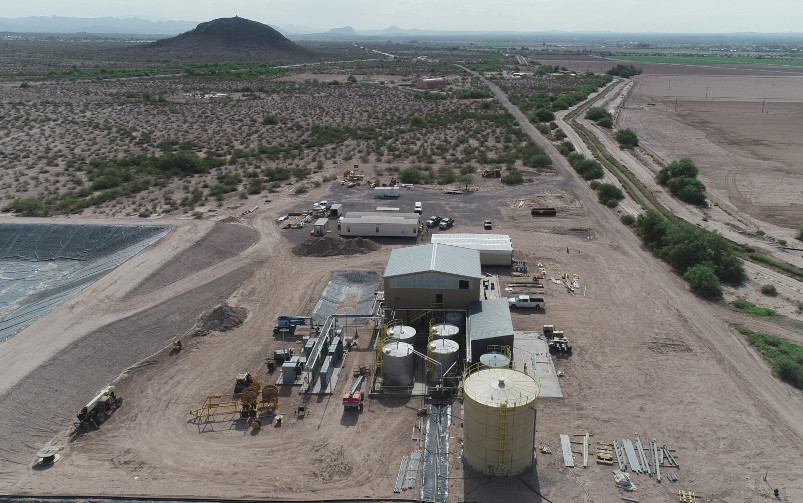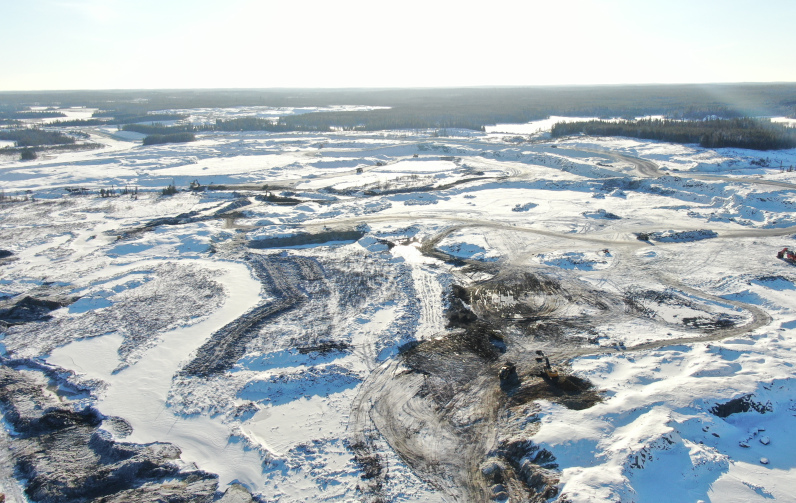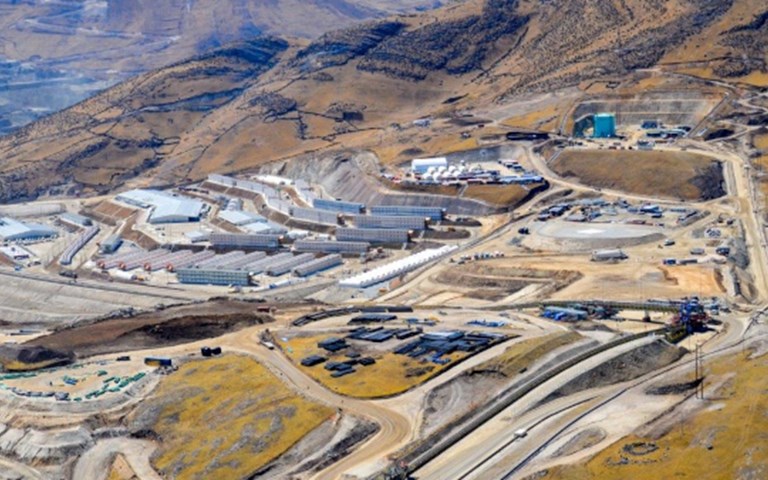Las Bambas is located in Peru’s Andean region, home to several large mines. Courtesy of MMG
Las Bambas has been a point of contention since it began operations in 2016.
Locals allege that pollution from the mine affects water sources, that dust from trucks is killing crops and animals, and that the community does not receive enough financial compensation from MMG, the mine’s owner.
In November, residents of the Chumbivilcas province attempted to negotiate for jobs driving copper trucks and other economic contributions to the community. When it failed, residents blocked the road for 27 days. MMG declared that it would shut down production at Las Bambas on Dec. 18 but has since restarted production at the mine.
“I suppose the media picks up on these protests and makes it seem like the whole of the Peruvian mining sector is up in arms, but actually it hasn't been. There have been some very high profile, long-running protests, but the mining sector gets on with it,” said Eileen Gavin, the senior Latin America Analyst for Verisk Maplecroft.
That being said, compared to other regions, there have been several anti-mining protests, driven mainly by local communities. “These almost exclusively relate to local matters such as water and land, pollution, employment or economic development and social investment,” said Gavin.
She explained that these communities often feel that they are not benefiting from mining and that big, typically foreign-owned mines come in, disrupt their way of life and allegedly cause pollution.
Las Bambas is Peru’s fourth-largest copper mine and the ninth largest in the world. The mine contributes one per cent of the country’s annual GDP and is responsible for two per cent of the global copper supply.
According to the Observatory of Mining Conflicts (OMC) in Peru, mining protests have increased since July 2021, when Pedro Castillo was declared president of Peru. The epicentre of social unrest being the Andean region, also known as the Southern Mining Corridor, home to Las Bambas and other large mines such as Glencore’s Antapaccay and Hudbay’s Constancia.
Related: On care and maintenance since 1993, Ivanhoe says Kipushi will be one of the highest-grade zinc mines on the planet
The OMC also reported 42 social-environmental conflicts within the Andes, most related to the mining industry. This is also the region where Castillo received high electoral support, especially in rural areas. In some districts, he obtained more than 90 per cent of the votes.
Gavin pointed out that there was a truce of sorts at Las Bambas in July 2021. However it collapsed almost immediately and, according to Gavin, other copycat protests at other mines continue to simmer.
In July 2021, The Ombudsman's Office of Peru, an organization that protects the fundamental rights and freedoms of individuals and communities in Peru and monitors the performance of the state, reported 195 social conflicts in the country, 63.8 per cent of which were linked to mining.
Just five months later, in its December 2021 Report on Social conflicts, the organization reported 202 social conflicts. 66.7 per cent of those conflicts were linked to mining.
Gavin explained that Castillo’s government is a “very novice government”. Castillo has very little political experience, not even at the regional or political level and neither do the people around him. “They don't know how to run institutions or how to run governance so there have been very poor responses to these mining conflicts, which is not what communities expected,” said Gavin.
The growth of social media and apps such as WhatsApp have also made groups more aware of each other, and more able to communicate and coordinate. There's the ability to plan ahead, hold protests at the same time as well as keep each other informed, aware, or educated.
Gavin described it as “more coherent and more organized.” Anti-mining protests have gone from separate, local communities to regional, national and even transnational movements. Larger international groups can lend support by making them aware of the rules or the law and how it's evolving. South American groups can communicate with groups in Central America, Mexico and other regions.
As a result, they are more able to take cases in international judicial instances. Litigation takes place not just regionally, locally or provincially but also in international courts, whether those are Latin America or even The Hague.
“They're taking action by international law which previously wasn't so much the case,” said Gavin. “And I think you can expect to see much more of that, especially post-COP 26. The issue of climate change and sustainability, protecting the environment and having much more sustainable development, is giving communities more room to litigate, or to argue their case.”
Despite resuming operations at Las Bamba in mid-December, tensions between MMG and local communities continue. On Jan. 17, Peruvian community leaders rejected a government proposal to prevent future blockades against Las Bambas.
According to Wood Mackenzie’s Global Copper Short-term Outlook December 2021 report, copper prices on the LME have been slowly declining since October.
The report stated that “Although prices were supported early on in December, on the back of news that MMG had been forced to temporarily close its Las Bambas mines, prices failed to hold on to their gains. The downward trend in prices continued over the balance of the month.”
The 3-month price went from a high of US$9,677.50 per tonne on 7 Dec., to a trading range of between US$9,100 and US$9,600 per tonne.
“The instability of the Castillo government, uncertainty about the fiscal outlook for the sector, and this conflictive social situation on the ground bodes ill for the mining sector in 2022 and will continue to deter new investment; albeit several larger expansion schemes will continue as planned,” said Gavin.
Gavin also pointed out that the pandemic has “lifted the lid on the whole Pandora's box of issues” and exacerbated pre-existing problems such as poverty, lack of access to health care and education.
Peruvian health minister, Hernando Cevallos, warned residents about the potential for further restrictions in the face of a rapid increase of the new Omicron Covid variant in Peru. Gavin explained that this would also be a net negative for mining operations and, at the very minimum, create staffing and logistics issues.
“At the very outset of the pandemic, we said, once the lockdowns come to an end, there will be an uptick in social unrest, and that's exactly what happened,” she said.




